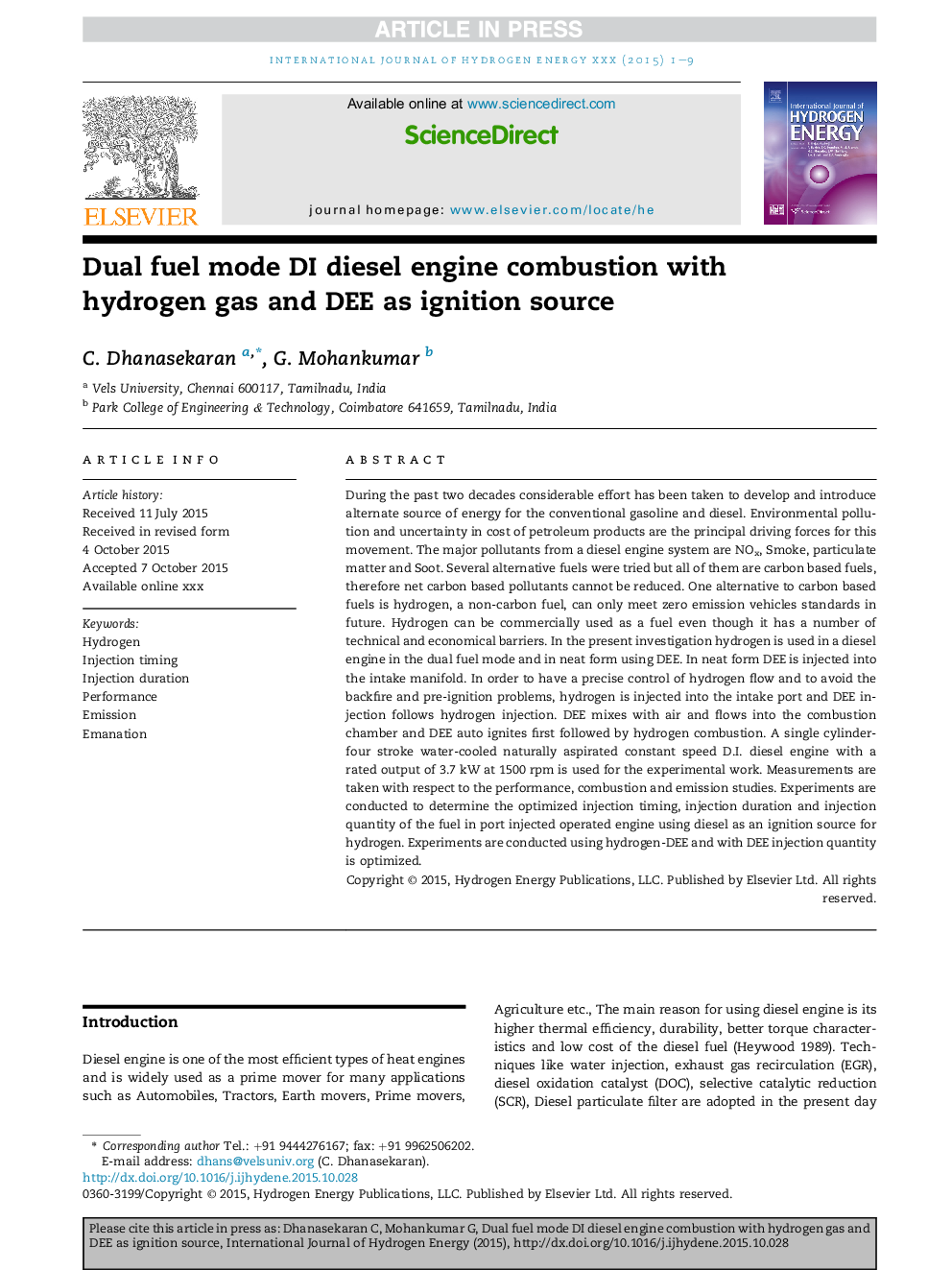| Article ID | Journal | Published Year | Pages | File Type |
|---|---|---|---|---|
| 7713031 | International Journal of Hydrogen Energy | 2016 | 9 Pages |
Abstract
During the past two decades considerable effort has been taken to develop and introduce alternate source of energy for the conventional gasoline and diesel. Environmental pollution and uncertainty in cost of petroleum products are the principal driving forces for this movement. The major pollutants from a diesel engine system are NOx, Smoke, particulate matter and Soot. Several alternative fuels were tried but all of them are carbon based fuels, therefore net carbon based pollutants cannot be reduced. One alternative to carbon based fuels is hydrogen, a non-carbon fuel, can only meet zero emission vehicles standards in future. Hydrogen can be commercially used as a fuel even though it has a number of technical and economical barriers. In the present investigation hydrogen is used in a diesel engine in the dual fuel mode and in neat form using DEE. In neat form DEE is injected into the intake manifold. In order to have a precise control of hydrogen flow and to avoid the backfire and pre-ignition problems, hydrogen is injected into the intake port and DEE injection follows hydrogen injection. DEE mixes with air and flows into the combustion chamber and DEE auto ignites first followed by hydrogen combustion. A single cylinder-four stroke water-cooled naturally aspirated constant speed D.I. diesel engine with a rated output of 3.7Â kWÂ at 1500Â rpm is used for the experimental work. Measurements are taken with respect to the performance, combustion and emission studies. Experiments are conducted to determine the optimized injection timing, injection duration and injection quantity of the fuel in port injected operated engine using diesel as an ignition source for hydrogen. Experiments are conducted using hydrogen-DEE and with DEE injection quantity is optimized.
Related Topics
Physical Sciences and Engineering
Chemistry
Electrochemistry
Authors
C. Dhanasekaran, G. Mohankumar,
